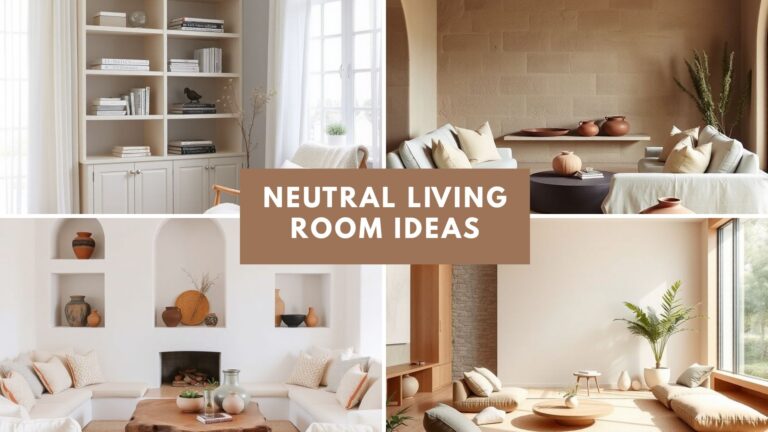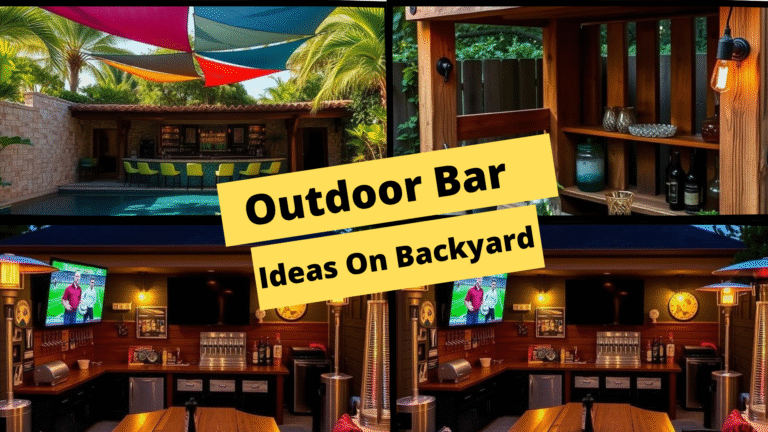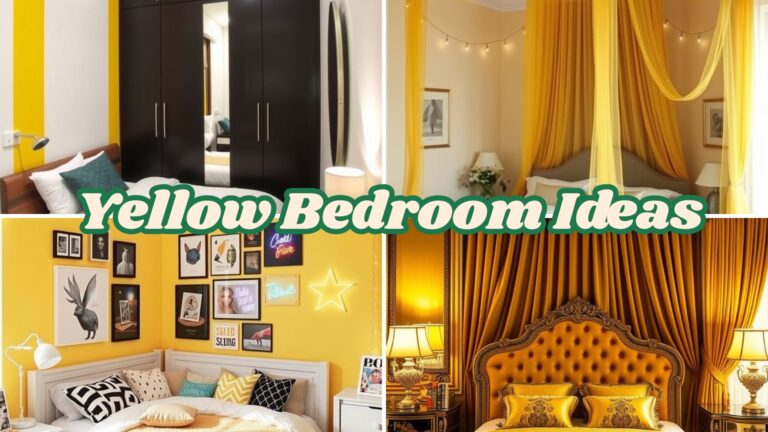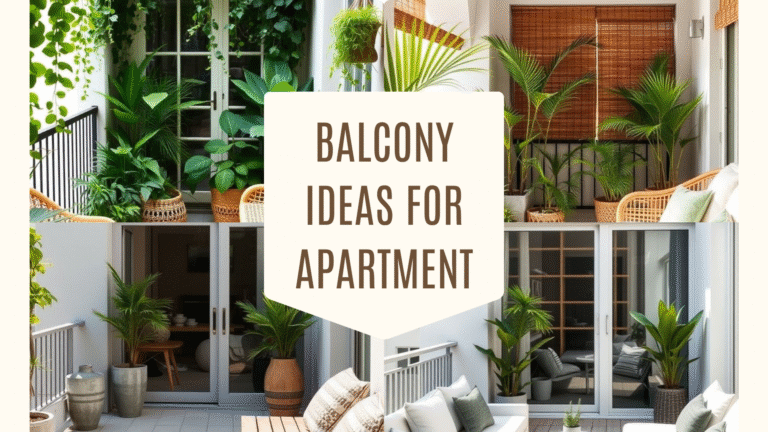Accent Wall in Living Room Ideas for Modern Spaces
Walls are no longer just structural necessities—they’re storytelling canvases. Whether you’re revamping a single room or designing an entire space from scratch, your choice of wall design plays a major role in setting the tone. From bold graffiti art to intricate handcrafted panels, each wall treatment carries a mood, message, and aesthetic language. Personally, I’ve walked into rooms where the walls instantly made me pause, curious about the story behind the textures, materials, or colors.
In this article, I’ll walk you through 20 standout wall design ideas that caught my eye for all the right reasons. Each one has its own character—from the edgy charm of graffiti walls to the quiet sophistication of textured wood. These aren’t just trends; they’re statements. And if you’re anything like me, you know a wall has the power to completely reshape how a room feels. Let’s dive into the first batch and see what makes them special.
Abstract Graffiti Urban Wall
The raw energy of graffiti isn’t just for alleys and street corners anymore. When I first saw a home office covered in abstract graffiti, it felt like the room had a pulse. The mix of bright, unpredictable colors, overlapping shapes, and spray-paint textures created a vibe that was electric. It’s bold, yes, but also creative—almost like stepping into the mind of an artist mid-expression.
What’s great about graffiti walls is their custom nature. No two pieces are alike, and that means your space can be truly yours. You can commission a local artist or even DIY it if you’re feeling brave. The key is balance: pair it with neutral furniture or minimal decor to avoid sensory overload. Trust me, when the wall is that loud, the rest should whisper.
Functionally, this style fits best in areas meant for inspiration—studios, creative workspaces, or even an artsy lounge. It’s not the most calming backdrop, but it sure knows how to spark ideas.
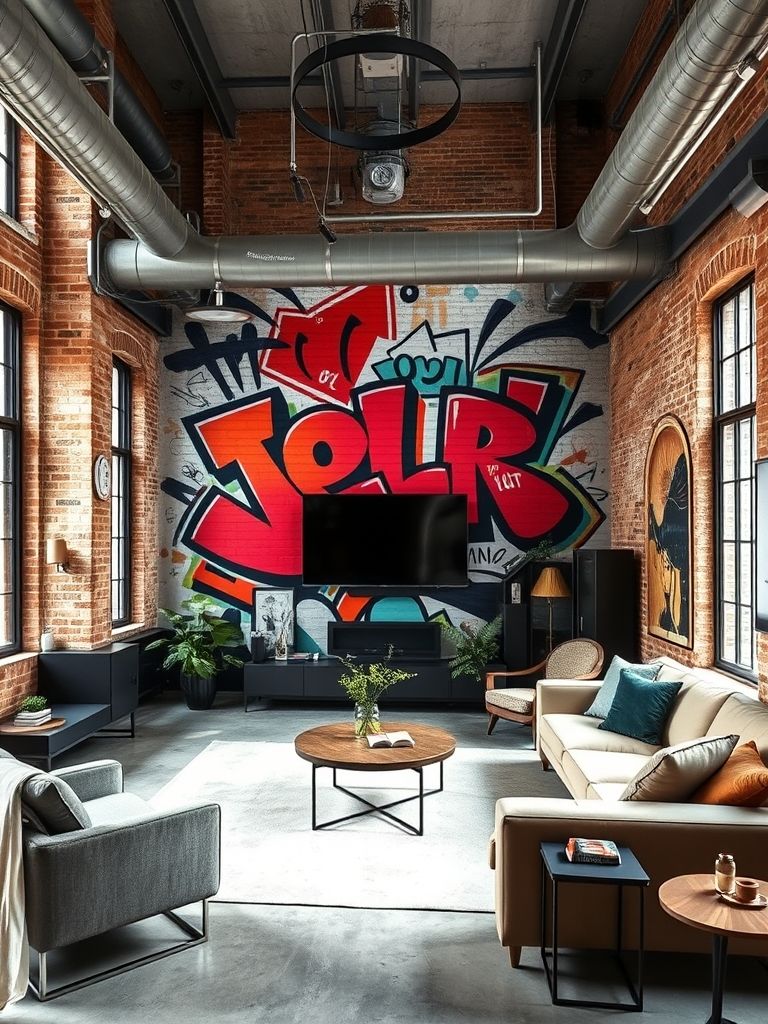
Bold Botanical Wallpaper
There’s something refreshing about walking into a room that feels like it’s half indoors, half rainforest. Bold botanical wallpaper does just that. I remember a bedroom I visited where palm leaves and oversized banana fronds stretched floor to ceiling—it felt lush and immersive without being overpowering. The colors were deep greens and soft beiges, which grounded the wild pattern in calm earth tones.
This style works wonders in sunrooms, bedrooms, and even powder rooms. It creates a sense of closeness to nature while still staying entirely indoors. The trick here is to go big but not chaotic. Large-scale patterns with repeating elements create rhythm and visual flow, rather than a jungle overload.
You can lean into the tropical theme with rattan furniture, linen textures, and natural lighting—or contrast it with sleek modern pieces for a more curated, editorial look.
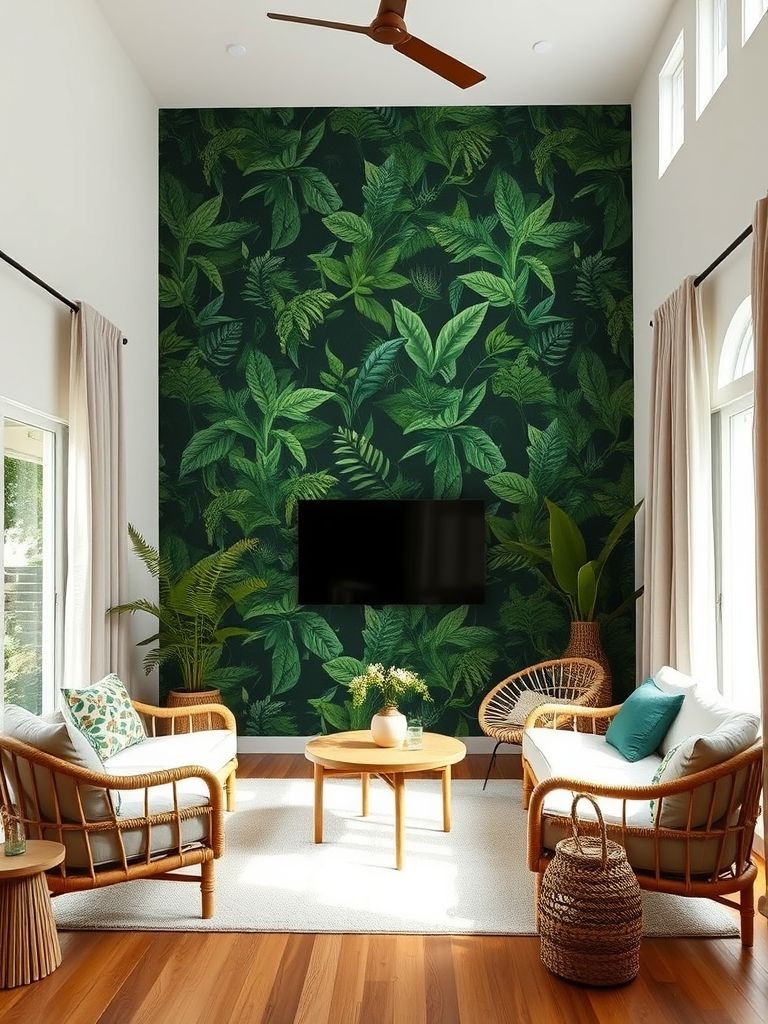
Chalkboard Creativity Corner
This one’s playful, functional, and oddly nostalgic. A chalkboard wall instantly turns any room into a rotating canvas. I installed one in a kitchen corner once, and it became the go-to space for grocery lists, doodles, quotes, and even quick family notes. There’s a casual charm to it, something both adults and kids appreciate.
Beyond the kitchen, it’s perfect for kids’ bedrooms, home offices, or study nooks. The best part? You can erase and reinvent it anytime. Go minimalist with white chalk drawings on a black base, or color it up with pastels for a more vibrant approach. Either way, it’s interactive and adds personality.
One tip—use high-quality chalkboard paint and make sure the wall is smooth before application. The finish matters more than you’d think, especially if you want clean lines when writing or sketching.
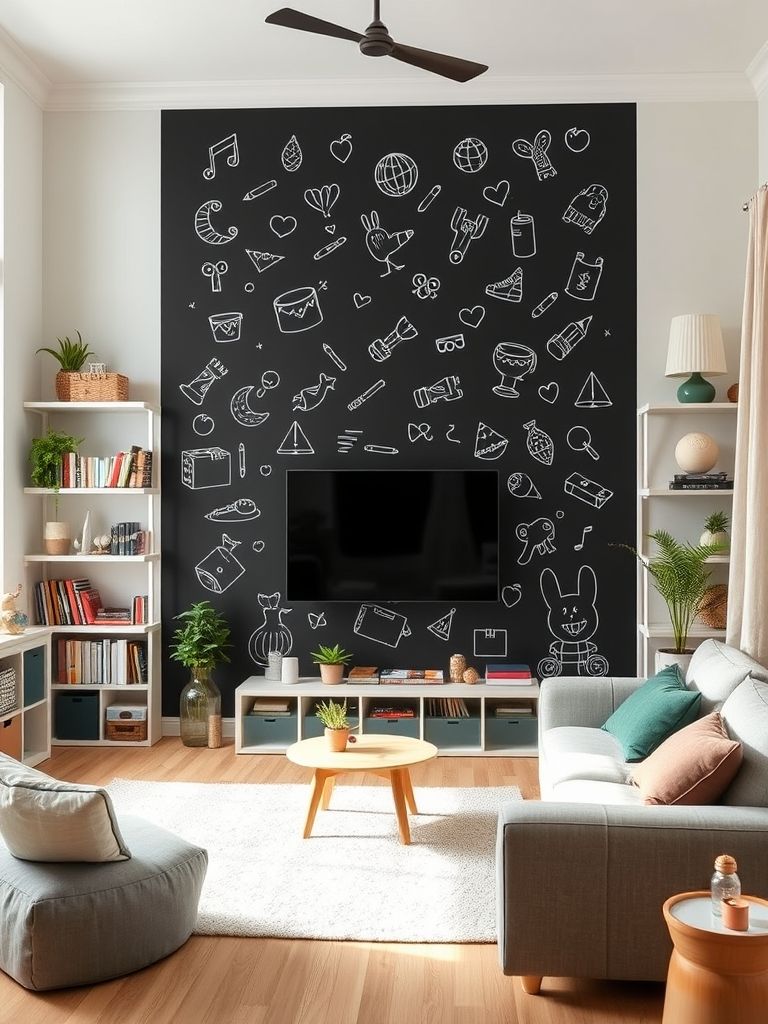
Charcoal and Copper Contrast
Here’s a combo that surprised me with its elegance: deep charcoal gray paired with copper accents. I saw this in a modern hallway and couldn’t stop admiring the contrast. The matte gray brought depth, while the warm metallics introduced just enough shine. It was moody but rich, serious yet stylish.
This look plays well with industrial interiors but can easily be softened with plush textures and soft lighting. Think velvet furniture, warm LED strips, and natural wood elements. Copper elements don’t need to be overdone—a few geometric inlays, light fixtures, or framing details will do the trick.
Lighting is key here. You want enough brightness to make the copper pop but not so much that it flattens the charcoal’s impact. Done right, it creates a polished, almost cinematic effect.
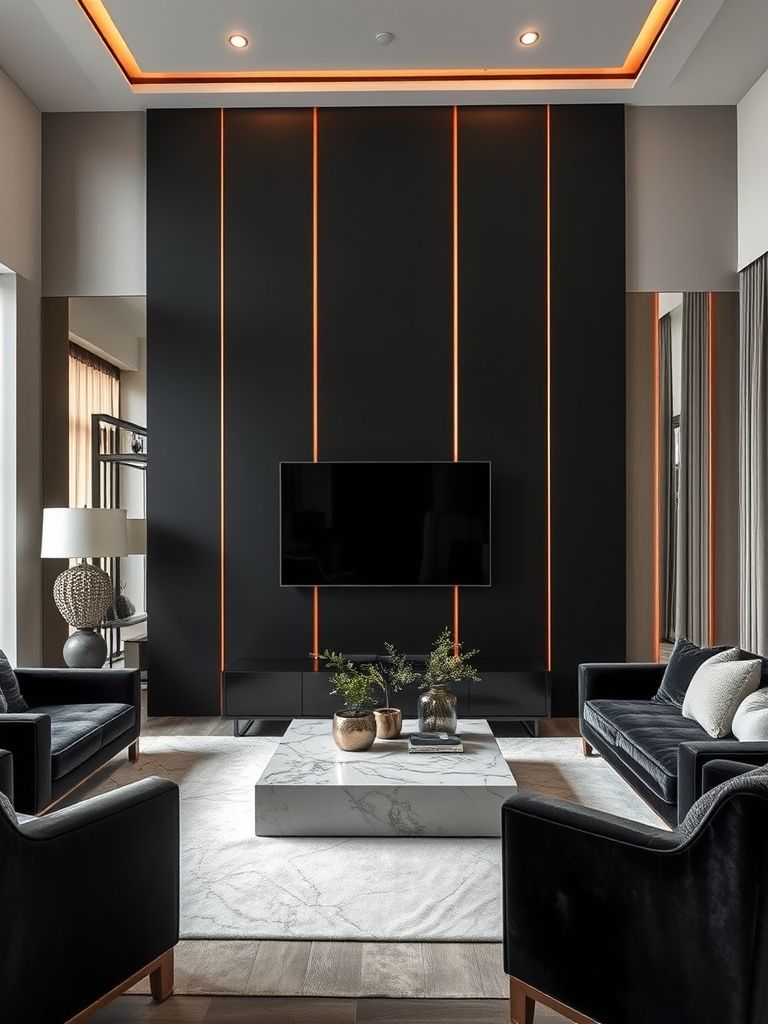
Concrete Chic
I know “concrete” and “chic” don’t always go together in people’s minds—but hear me out. A concrete wall, when done right, is sleek, grounded, and effortlessly cool. It brings an industrial edge without feeling cold or unfinished. I walked into a café once where the concrete wall was polished smooth and paired with soft leather chairs and pendant lighting—it was stunning.
It works best when paired with warmth: wood floors, cozy textiles, or colorful artwork. Too much gray, and the room can feel sterile. But as a backdrop, concrete adds texture and authenticity that paint can’t match.
Also, concrete is durable. If you’re looking for a wall finish that will last and age gracefully, this is it. A sealant adds a subtle sheen and protects against moisture—especially important in bathrooms or basements.
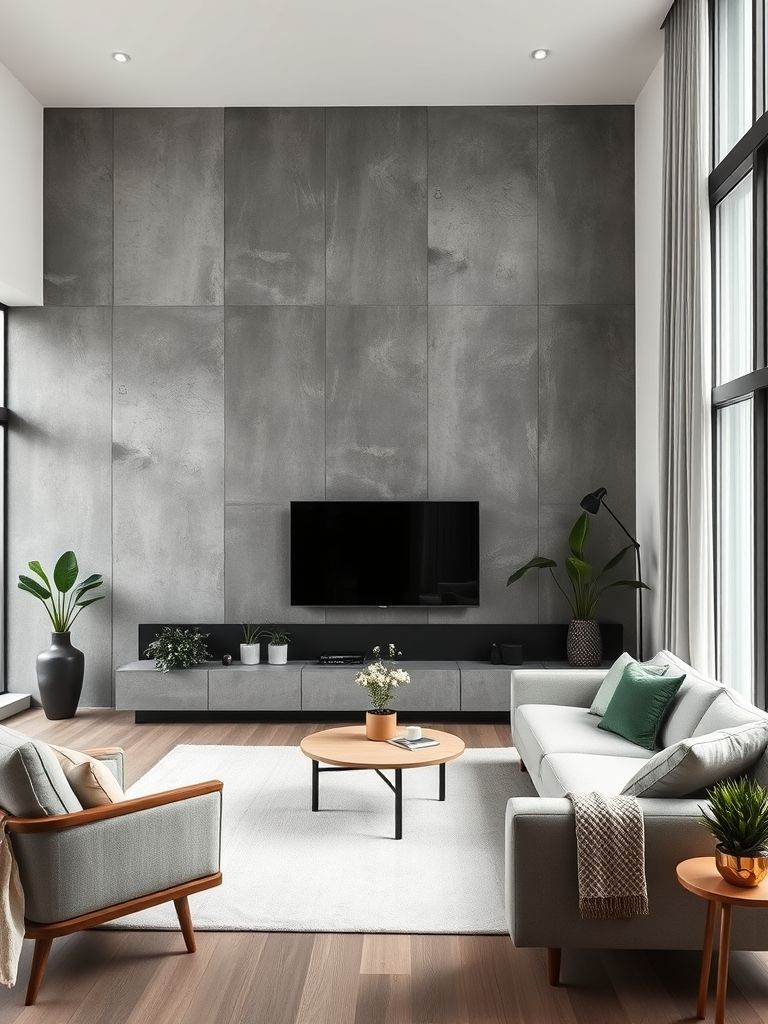
Digital Art Projection Wall
I once stayed in a boutique hotel where the entire wall shifted colors and designs through a ceiling-mounted projector. At first, I thought it was just clever lighting—but it was digital art on a whole new level. A projection wall lets you change your environment without lifting a brush or swapping wallpaper.
The flexibility is incredible. You can set calming visuals during the day, switch to abstract patterns at night, or even display moving visuals synced to music. It’s like having a gallery that updates on demand. This works best in media rooms, home theaters, or creative lounges where mood-shifting ambiance is the goal.
Of course, it requires the right setup—ambient lighting, a flat surface, and high-resolution projection. But once it’s done, it feels like living inside an ever-changing piece of art.
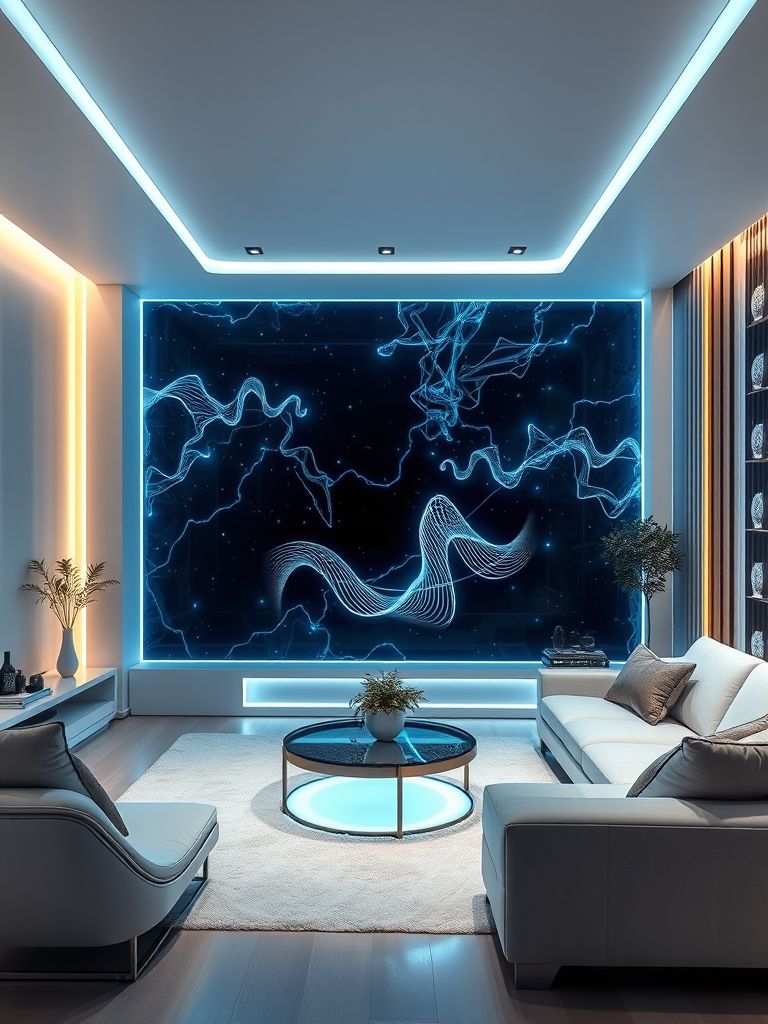
Fluted Paneling With LED Backlight
Here’s a look that blends traditional craftsmanship with sleek modern tech. I remember visiting a design studio where the walls were covered in vertical fluted wood panels, each edge softly glowing from warm LED strips tucked behind. It was subtle, sophisticated, and seriously luxurious.
Fluted paneling has been around for ages, but when you combine it with integrated lighting, it takes on a whole new vibe. The grooves create natural shadows that the LEDs enhance, giving the wall depth and rhythm. It’s especially effective in hallways, entryways, or behind headboards.
This setup does require some planning—electric wiring behind the panels, diffused LED placement, and precision cuts. But once installed, it becomes a quiet showstopper. It’s also dimmable, so you can control the mood with a remote or smart app.
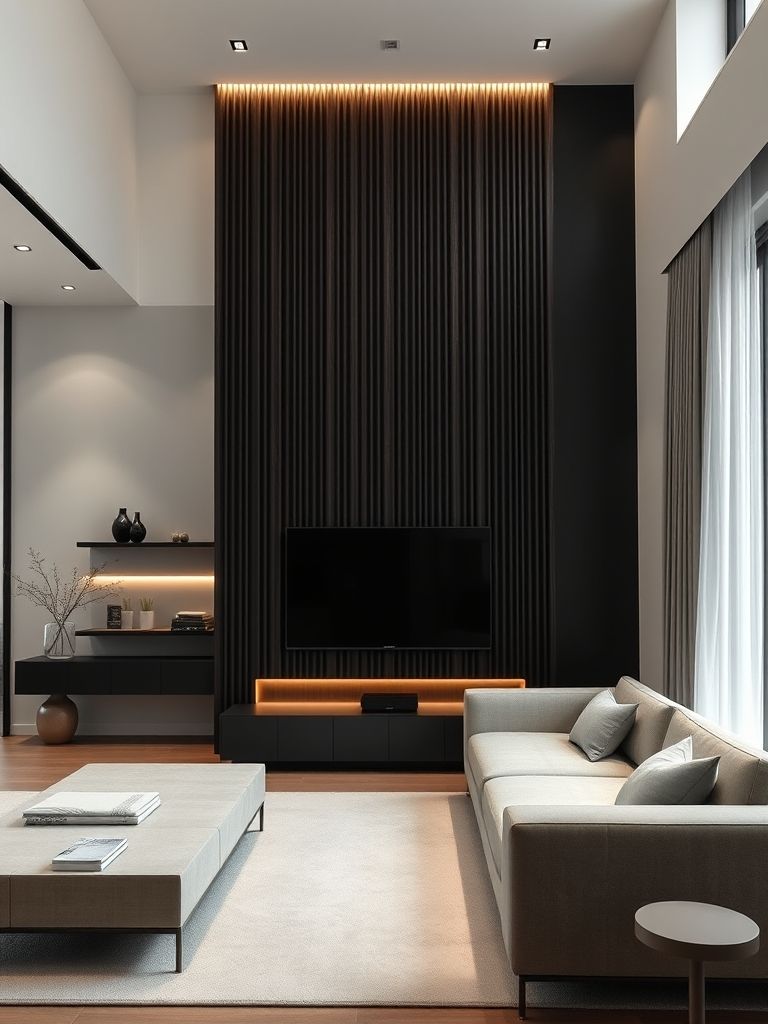
Gallery Wall Statement
This one’s a personal favorite of mine because it evolves over time. A gallery wall—when curated right—is like a biography told in frames. I’ve built a few myself using family photos, vintage magazine covers, postcards, and art prints. The key is balance and spacing. It should look collected, not cluttered.
The most effective gallery walls have one unifying element—either a color palette, frame type, or theme. For example, black-and-white photography with black frames looks cohesive, even if the subjects vary. If you want to go bold, mix frame colors but align all the tops or centerlines.
These walls are great in stairwells, living rooms, or offices. They tell stories, spark conversations, and grow with you. Plus, rearranging them every year brings a fresh feeling to the space without much effort.
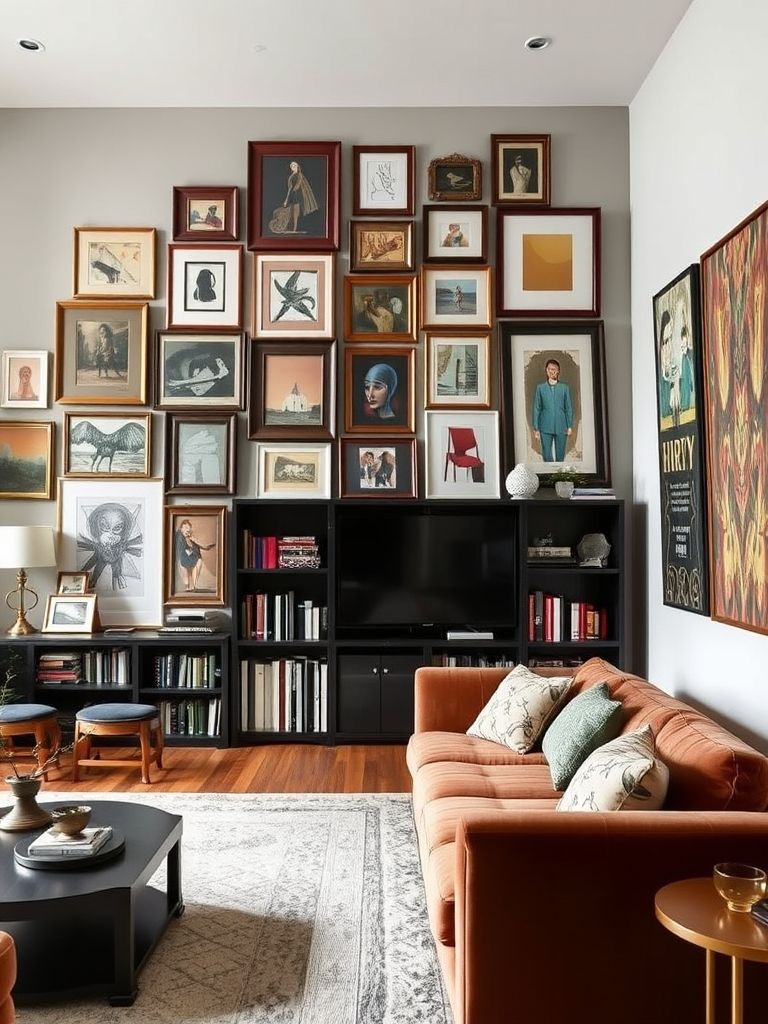
Geometric Wood Panel Wall
Now this one caught me off guard when I saw it in a boutique coworking space. Large wooden panels cut into triangles, rhombuses, and hexagons formed a full-wall mosaic. It wasn’t just decorative—it added sound insulation and warmth to the room too. The mix of wood tones and geometric rhythm made the space feel grounded but modern.
Creating this look takes a bit of craftsmanship. You can use pre-made panels or commission a carpenter to cut custom shapes. Either way, once installed, the visual effect is hypnotic. Lighting helps highlight the facets and edges, so consider a track light or wall washers.
This type of wall design fits well in offices, creative studios, or modern living rooms. It adds texture without overwhelming the space and works best with simple furnishings and neutral floors.
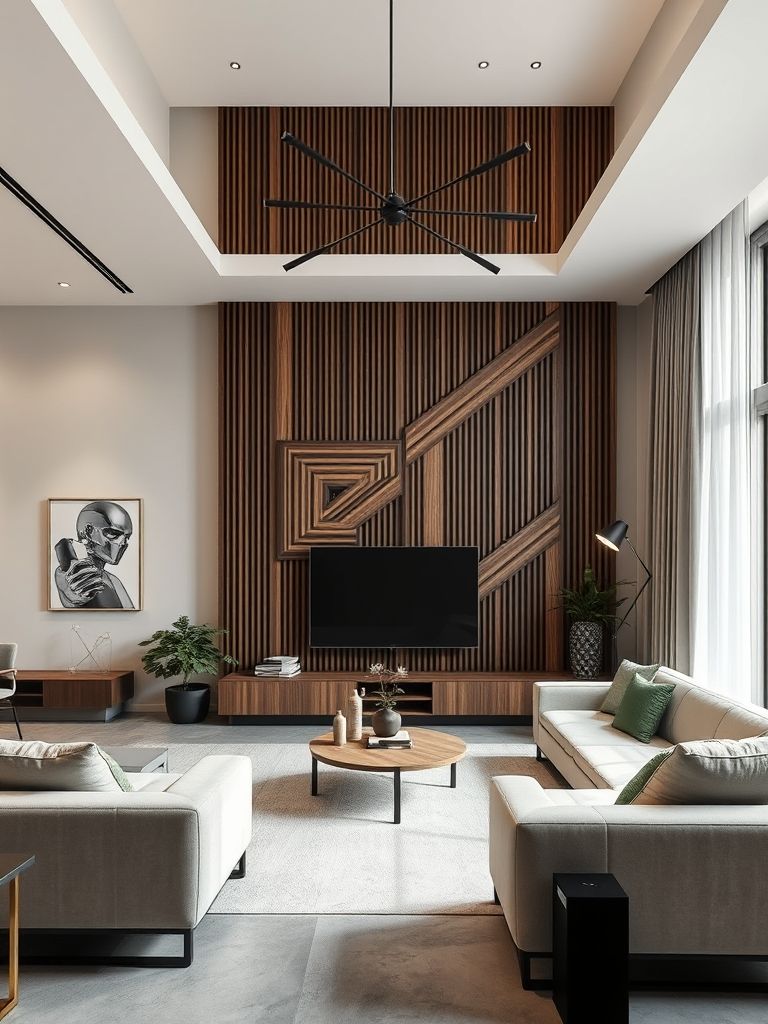
Handcrafted Clay Tiles Wall
Nothing beats the tactile charm of something made by hand. I visited a Moroccan-style café that featured an entire wall covered in handmade clay tiles—each one slightly different, full of imperfections that made the space feel warm and alive. The surface caught the light differently from every angle, giving it an organic shimmer.
Clay tiles add an earthy, artisanal vibe. They’re breathable, natural, and eco-friendly. You’ll find them in various finishes—glazed, matte, textured—and in a rainbow of subtle, natural tones. You can go all out with a full-wall installation or create a bordered feature wall with a central pattern.
They’re ideal for kitchens, bathrooms, and cozy reading nooks. Just keep in mind that because they’re handmade, installation requires extra care and a good eye for balance. But once done, they offer a richness that manufactured surfaces just can’t replicate.

Interactive Living Wall
One of the most immersive experiences I’ve had was walking into a lobby where the wall was alive—literally. The interactive living wall was covered in greenery, with ferns, moss, and air plants forming a vertical garden. Soft sensors even reacted to sound and light, slightly shifting the irrigation and lighting patterns throughout the day. It was like the wall had a heartbeat.
Living walls are more than décor—they purify air, absorb sound, and introduce a calming energy. In homes, they’re often used in kitchens, bathrooms, or patios. Smaller versions can be framed like art, while large-scale ones need structural support and irrigation systems.
They require upkeep, but the reward is huge. It’s not just a wall—it’s a piece of living architecture. And the moment you step into a room with one, you feel the difference. It’s soothing in a way paint or wallpaper can never be.
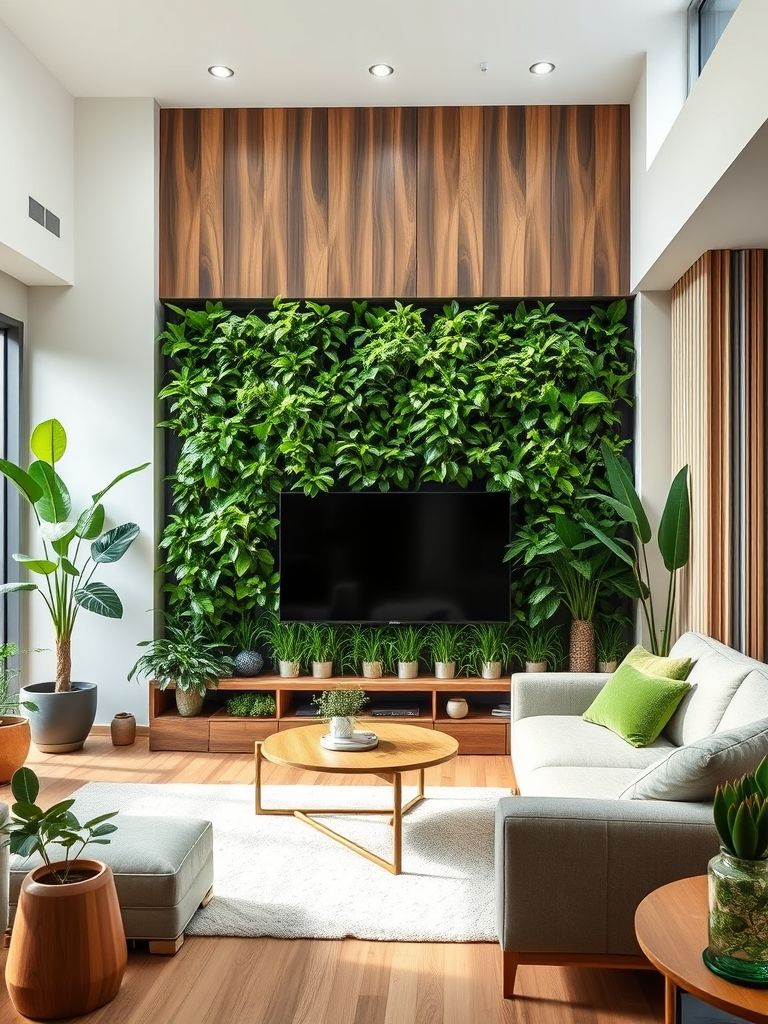
Layered Texture Fusion
I once saw a dining room wall that combined leather panels, stone tiles, and velvet wallpaper in a single seamless layout. It shouldn’t have worked—but it did. That’s the magic of layered texture fusion. By blending multiple materials—smooth, rough, soft, and shiny—you get a surface that demands attention without shouting for it.
This approach is for people who like a touch of the unexpected. It’s all about contrasts: hard and soft, matte and gloss, rustic and refined. When done carefully, it turns a plain wall into a sculptural installation. But planning is everything. Transitions between materials must be clean and intentional.
Layered walls are perfect in formal spaces like dining rooms, home libraries, or chic retail environments. They act like a feature wall, so keep the rest of the room simple to let the mix of textures do the talking.
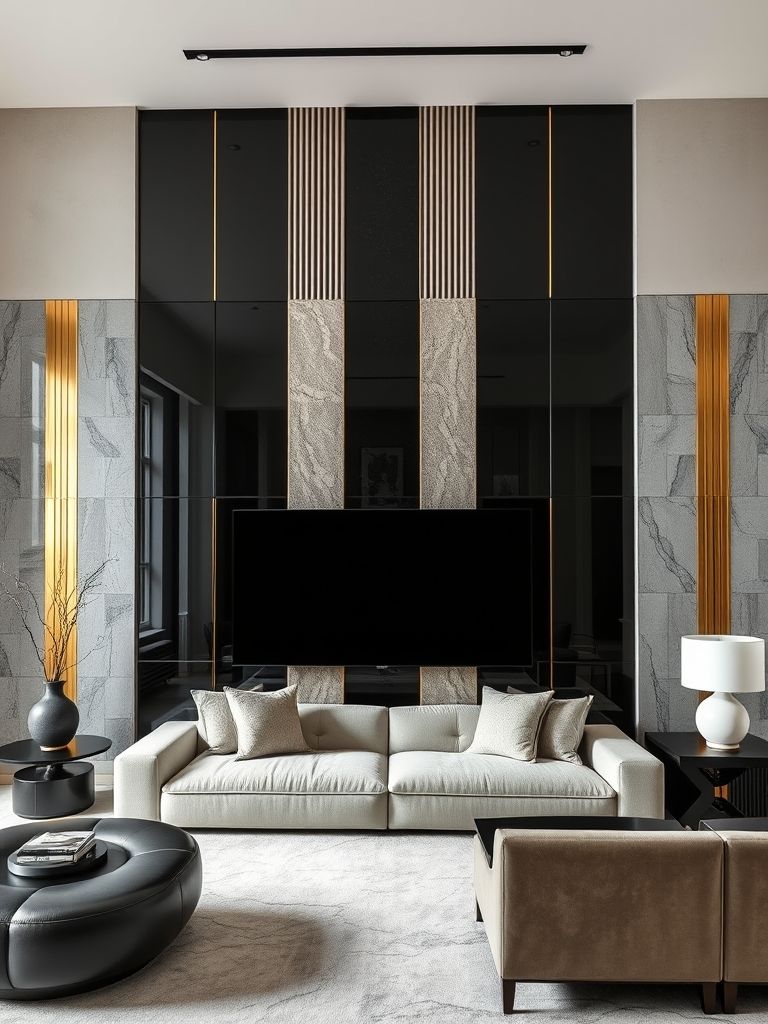
Metallic Gradient Glam
This one felt like something out of a fashion runway set. The wall started in brushed bronze at the bottom and melted upward into a pale champagne gold near the ceiling. It was subtle at first, but the longer I looked, the more the light shifts created a shimmer effect. That’s the essence of a metallic gradient glam wall—it moves with the room.
These finishes work best on smooth surfaces and with indirect lighting. They can be achieved using specialty paint, foil application, or pre-finished panels. The gradient adds visual height or width, depending on direction, making it a great tool for small rooms or low ceilings.
I recommend using it in glam bathrooms, boutique bedrooms, or luxe dressing areas. It pairs beautifully with soft textiles, crystal lighting, and neutral palettes that let the shimmer be the star.
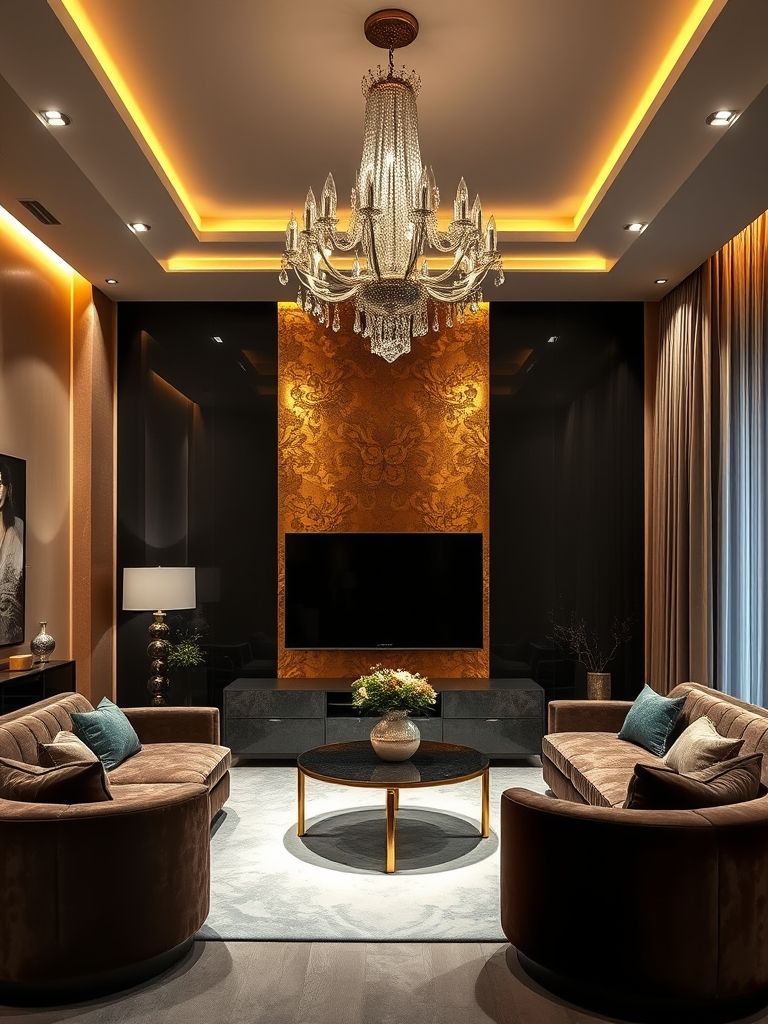
Mid-Century Mural Magic
There’s something charmingly retro about mid-century murals. I visited a creative workspace where one wall was a large hand-painted design full of arches, sunbursts, and stylized figures—straight out of a 1960s illustrated magazine. It wasn’t just nostalgic; it was lively and full of character.
These murals can be abstract or themed, but they usually share bold colors, curved shapes, and graphic simplicity. Whether it’s painted directly or printed on wallpaper, the effect is one of confidence and charm. It invites conversation and adds personality to otherwise bland interiors.
If you want a mural like this, commission an artist or use a peel-and-stick mural panel. The vibe is perfect for dining areas, studios, or stylish cafes. Just keep the surrounding furniture minimal to let the mural shine as a focal point.
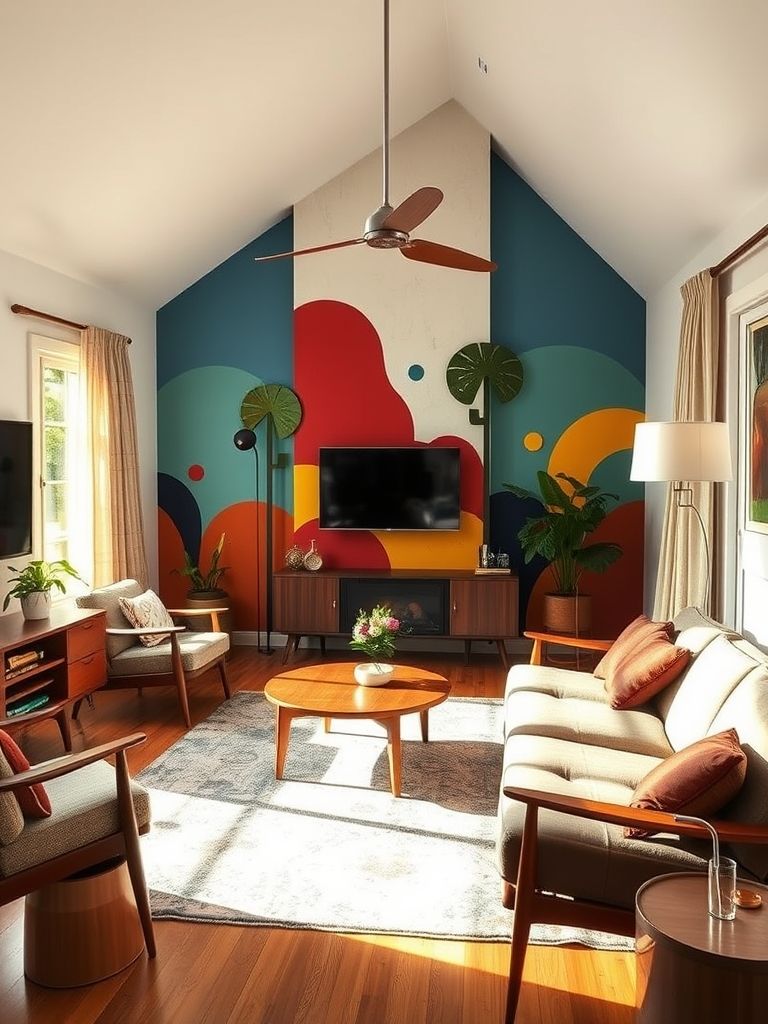
Mirror Mosaic Modernism
In a boutique hotel hallway, I once saw a wall covered entirely in small square and hexagonal mirrors, arranged like a glittering skin. It wasn’t a full reflection, more like fragmented glimpses of the room that bounced light and created an ever-shifting visual experience. That’s the power of mirror mosaic walls—they don’t just reflect; they animate.
Mirror mosaics work best where you want light movement and a bit of sparkle—entryways, dining rooms, or event spaces. They’re not for every space, as too much can feel busy, but in moderation or on a feature section, they add instant drama.
Installation can be tricky due to sharp edges, so always use safe, polished pieces or protective backing. And avoid direct clutter in front—since everything reflects, a messy area doubles visually. Keep the floor and furniture layout clean to maximize the mirrored magic.
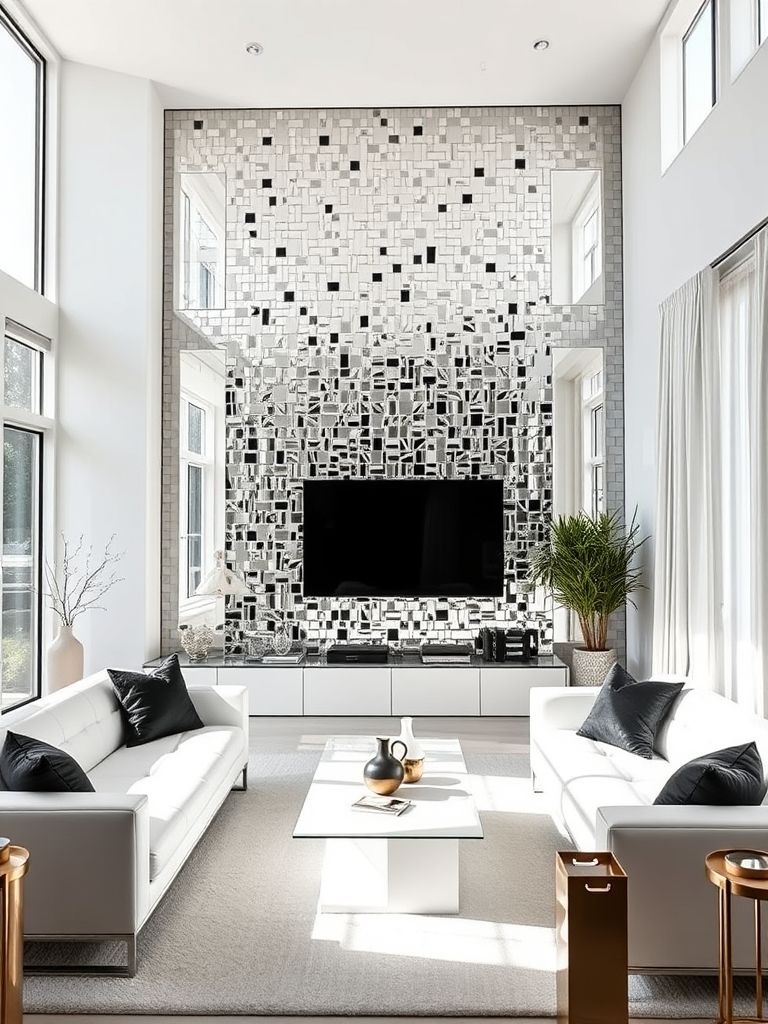
Ombré Painted Accent
The first time I saw an ombré painted wall, I did a double take. It was in a minimalist bedroom, where a pale blush shade at the floor gradually faded into soft white near the ceiling. The gradient wasn’t harsh—it was a gentle wash, like watercolors soaking into paper. It made the room feel calm and expansive.
Ombré walls are surprisingly versatile. You can use any color pairing—grays into whites, blues into seafoam, even burnt orange into beige. The transition draws the eye upward or outward, depending on how the fade is arranged. It’s a great way to add interest without resorting to patterns or texture.
The technique requires a good hand or a pro painter, especially if you want a smooth blend. It fits beautifully in nurseries, meditation spaces, bathrooms, or anywhere you want a serene atmosphere. Pair it with simple furniture and soft lighting, and let the gradient do the lifting.
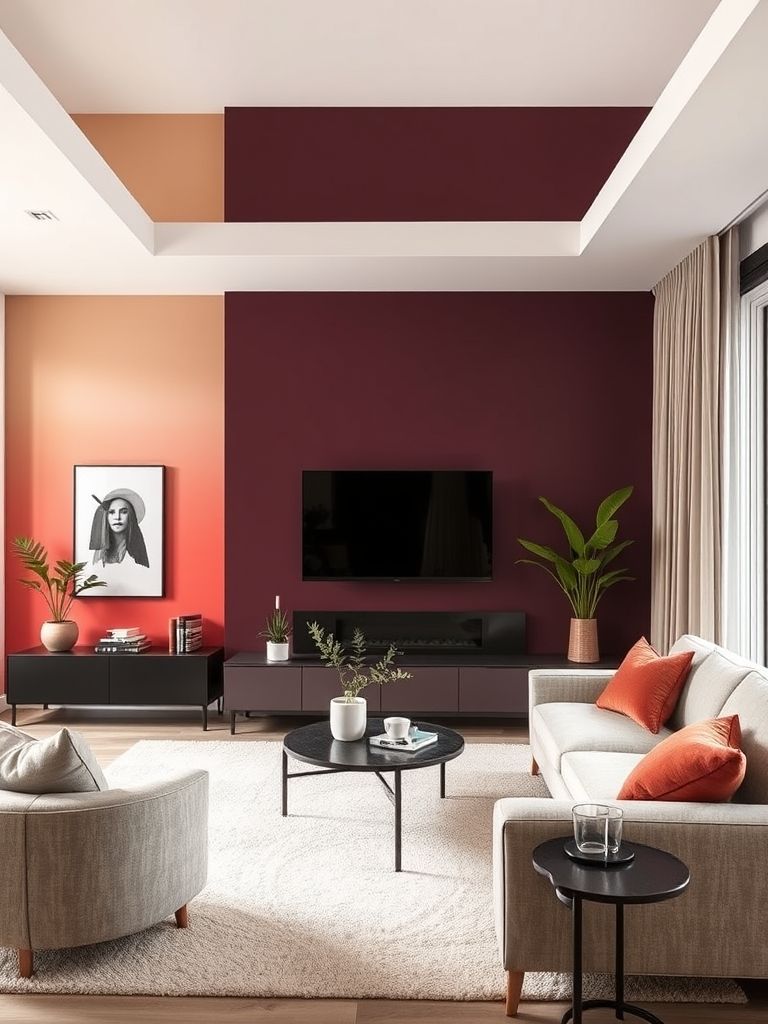
Rustic Brick Revival
There’s something grounding about exposed brick. I once helped a friend convert a loft, and when we tore off the drywall, we found decades-old red bricks underneath. Instead of covering them, we sealed and framed them—and suddenly, the whole space felt warmer and richer.
Rustic brick walls bring character and history. They don’t need to be perfectly aligned or polished; in fact, the charm lies in their imperfections. If you don’t have real brick, you can still achieve the look with veneer panels or faux brick tiles that mimic the same texture.
Brick walls work best when balanced with soft fabrics, warm lighting, and modern decor. Too many “vintage” elements can feel staged. But paired correctly, it creates an effortlessly cool space that feels lived-in and authentic.
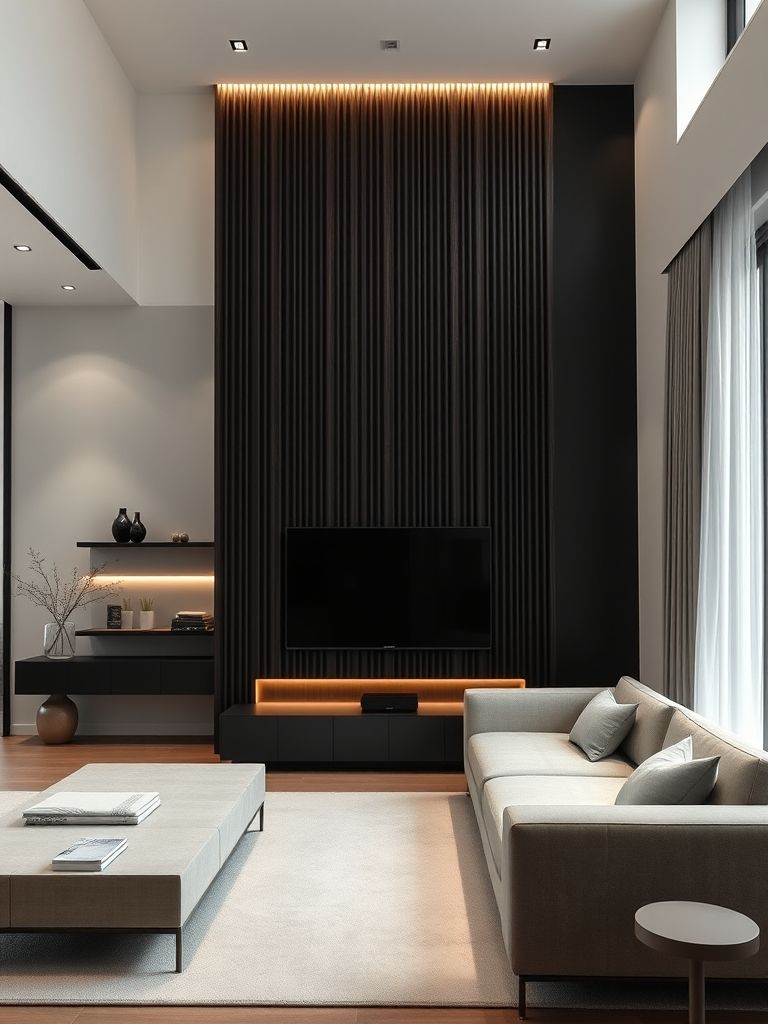
Slate Stone Sophistication
One of the most refined wall treatments I’ve seen was in a high-end living room where slate stone was installed in long, narrow horizontal panels. The deep grays and subtle sheen gave it a quiet confidence—like something ancient, but elegant. Slate brings a natural, luxurious texture without being flashy.
It works especially well in fireplaces, entryways, and even bathrooms. The variation in stone color and grain makes each panel unique, and the overall effect is structured but not rigid. It’s perfect for those who want texture without chaos.
Slate also holds up well over time. It resists water, doesn’t scratch easily, and gets better with age. Just make sure your lighting highlights its natural layers—soft downlights or warm LEDs really bring out the detail.
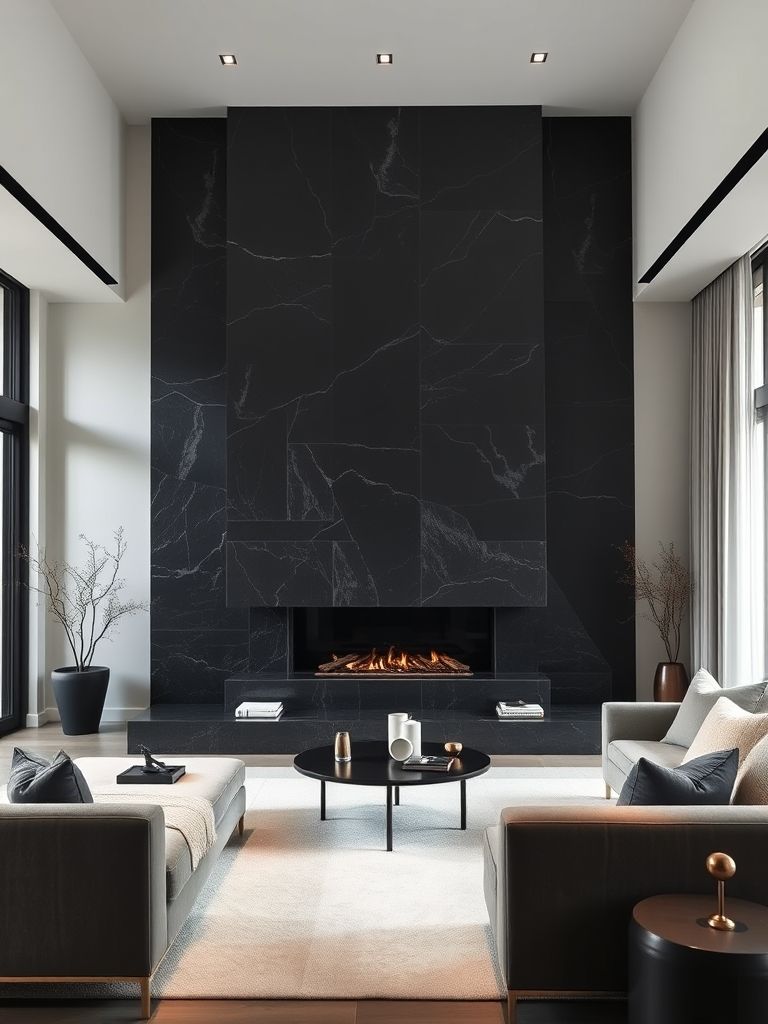
Terracotta Texture Trend
There’s a reason terracotta never goes out of style. I remember walking into a kitchen with one terracotta feature wall, and it immediately felt like a Mediterranean retreat. The warmth of the clay, the rough matte finish, and the earthy tones made it feel timeless and grounded.
Terracotta can be used in tile form, plastered textures, or even specially painted finishes that mimic the real thing. It works well in dining spaces, sunlit hallways, or anywhere you want a cozy, sun-baked aesthetic. It pairs beautifully with natural wood, cream linens, and leafy plants.
What makes it stand out is the color—it’s warm without being loud, rustic without being rough. It invites calm, and that’s a rare quality in a wall finish.
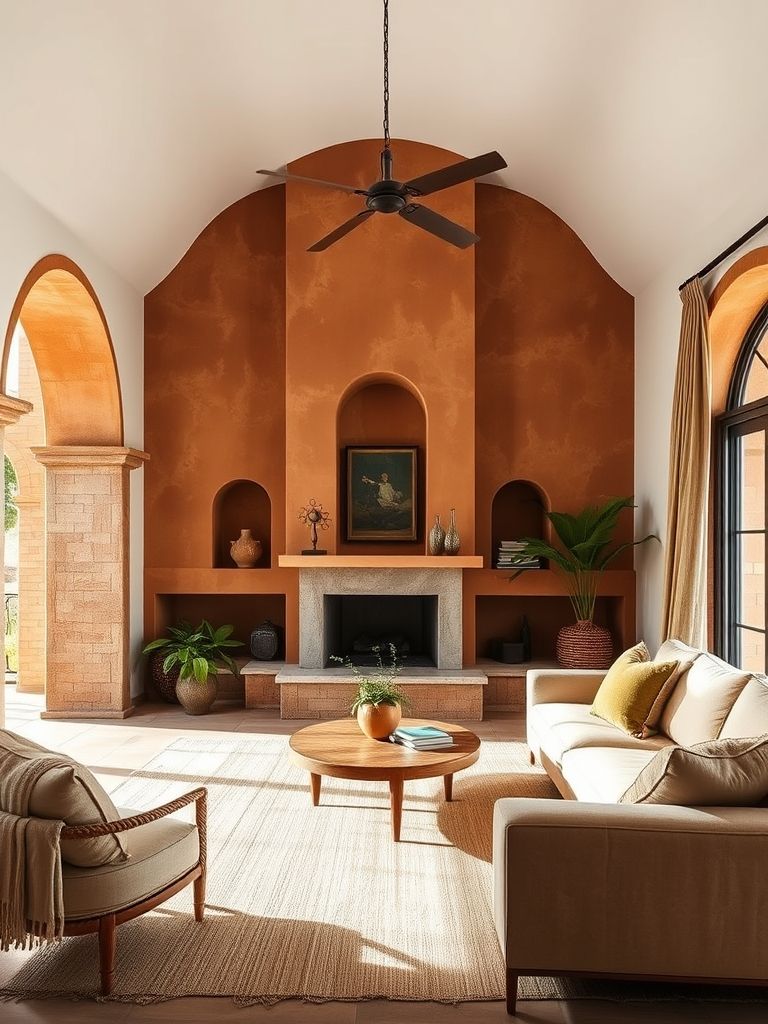
Textured Wood Elegance
Last but never least: textured wood. Whether it’s slatted oak, reclaimed barn boards, or sandblasted panels, wood brings depth and warmth like nothing else. I saw this most beautifully in a Scandinavian-style lounge where pale wood planks were laid diagonally with subtle grooves. It didn’t scream for attention—it whispered comfort.
Wood walls are great in bedrooms, offices, or even bathrooms if sealed properly. They offer acoustic benefits, temperature regulation, and visual softness. Depending on the finish, you can go rustic, minimalist, or luxury lodge.
The texture adds movement and touchability. And while it’s easy to overdo, even one accent wall is enough to shift the mood of the whole room. Just keep the furniture and flooring in harmony, and let the wood speak for itself.

Conclusion: Accent Wall in Living Room Ideas
What these 20 designs have shown me—and hopefully you too—is that a wall isn’t just a boundary. It’s a statement, a feeling, a texture, a story. Whether you’re going for bold and modern, soft and natural, or artistic and experimental, there’s a design that fits your mood and message.
Walls are our most consistent background. They deserve more than plain paint or forgotten wallpaper. So, if you’re planning your next room refresh, I hope this collection helps spark some bold choices—or even gentle shifts—that bring more personality into your space.


